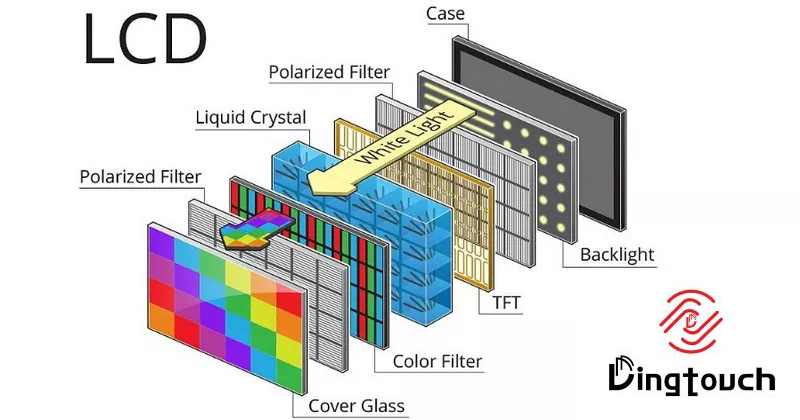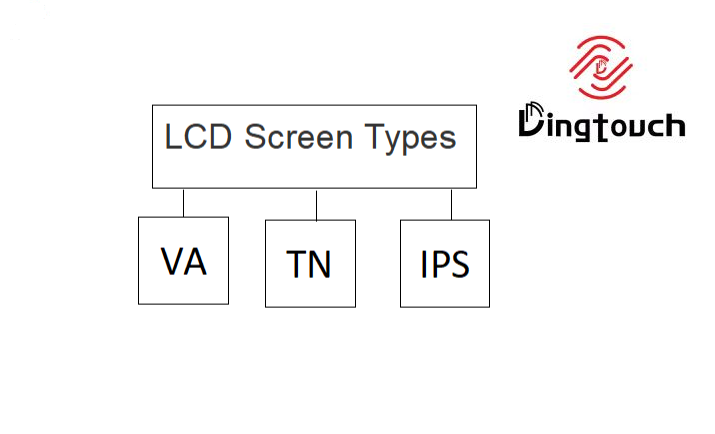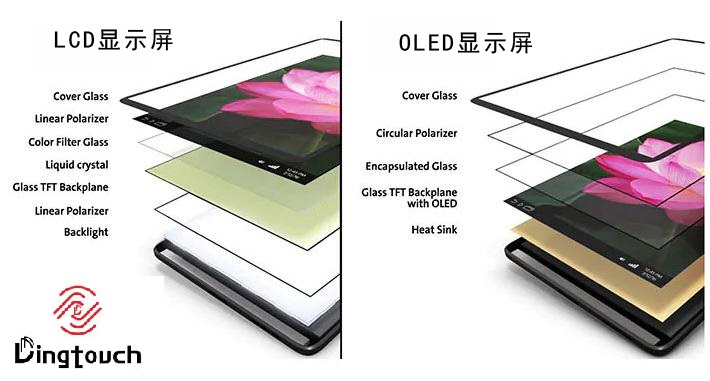News
LCD Screen: The Future of Display Technology

LCD Screen: The Future of Display Technology
Liquid Crystal Display (LCD) technology has become one of the most significant innovations in the field of visual technology. Over the years, it has revolutionized various industries, including consumer electronics, automotive, healthcare, and advertising, thanks to its high-quality visual output, energy efficiency, and versatile applications. In this article, we will delve into the working principles behind LCD screen, trace their evolution, explore their types and advantages, and look at emerging trends that might shape the future of display technology.
The Working Principle of LCD Technology
Before understanding how LCD screen have evolved, it is essential to explore how they function. Unlike older display technologies such as CRT (Cathode Ray Tube), which used electron beams and phosphors to create images, LCD operate using liquid crystals to control the passage of light.
Liquid Crystals: The Core of LCD
At the heart of every LCD screen lies the liquid crystal layer. Liquid crystals have unique properties: they can change their alignment in response to an electric field. This ability to modulate light passing through them is what allows LCD to generate images. Liquid crystals themselves do not emit light. Instead, they rely on an external light source called a backlight to illuminate the display. When an electric current is applied to the liquid crystals, they alter their orientation, either blocking or allowing light to pass through, thus creating various shades of brightness and colors.
The Role of Backlighting and Color Filters
LCD screen do not produce their own light. Instead, they depend on backlighting, which is typically provided by LED (Light Emitting Diode) technology in modern displays. The light passes through the liquid crystal layer, which modulates its intensity based on the image content being displayed. Then, color filters are used to produce the full spectrum of colors that are visible to the human eye. The precision in controlling the backlight and color filters is what makes modern LCD display capable of producing sharp and vivid visuals.
Evolution of LCD Technology
The Early Days: From Simple Displays to Modern Technology
The origins of LCD technology date back to the 1960s when researchers first began to explore the use of liquid crystals for display purposes. However, it wasn’t until the 1980s that commercially viable LCD started to appear. Early versions were monochrome displays, limited to low-resolution outputs, and were mainly used in simple devices like calculators and wristwatches. Although these initial applications were modest, they set the stage for rapid technological advancements.
Major Technological Milestones
Several milestones in LCD development have played a crucial role in the widespread adoption of the technology:
- TFT-LCD (Thin Film Transistor LCD): Introduced in the 1980s, TFT-LCD represented a major breakthrough. TFT technology allowed for the integration of transistors into each pixel, which improved image sharpness and enabled the display of full color. This development made it possible to create color screens suitable for a range of applications, from television sets to computer monitors.
- LED Backlighting: In the early 2000s, LED backlighting became popular. It significantly improved energy efficiency compared to the older CCFL (Cold Cathode Fluorescent Lamp) backlighting, allowing manufacturers to create thinner screens that consumed less power. LED also improved brightness and color accuracy.
- 4K and 8K Resolutions: The demand for higher-quality visuals led to the development of ultra-high-definition resolutions. As consumers demanded more detailed content, LCD evolved to support 4K and even 8K displays. These higher resolutions deliver stunning clarity, which is especially visible on larger screens.
Types of LCD Panels and Their Differences
Not all LCD panels are the same. Understanding the different types of LCD panels can help you determine which one is best suited for a specific application.
Twisted Nematic (TN) Panels
Twisted Nematic (TN) panels are the most commonly used type of LCD in budget-friendly devices, such as entry-level computer monitors, TVs, and gaming screens. TN panels offer fast response times, which is particularly important for activities like gaming, where speed is critical. However, TN panels suffer from limited color accuracy and poor viewing angles. When viewed from the side, colors appear washed out, which makes TN panels less ideal for professional applications.
In-Plane Switching (IPS) Panels
In-Plane Switching (IPS) technology was developed to address the shortcomings of TN panels. IPS displays offer better color accuracy and wider viewing angles, making them suitable for professional environments where precise color reproduction is required. IPS panels are commonly found in high-end smartphones, tablets, and laptops, as they deliver superior image quality and more consistent colors.
Vertical Alignment (VA) Panels
Vertical Alignment (VA) panels are another type of LCD display known for their high contrast ratios and deep black levels. They work by aligning the liquid crystals vertically, reducing light leakage and offering better contrast than TN and IPS panels. While VA panels tend to have slower response times, they are excellent for watching movies in dark rooms or using in home theater systems where high contrast is critical.
The Advantages of LCD Technology
LCD technology has become the preferred choice for displays in many industries due to its numerous advantages over older display technologies like CRT and plasma. Some of the key benefits of LCD screens include:
Energy Efficiency
One of the most notable advantages of LCD is their energy efficiency. Unlike CRT displays, which consume a significant amount of power, LCD use a backlight that requires much less energy. This energy-efficient design has made LCDs the technology of choice in consumer electronics, where long-lasting battery life and low energy consumption are key selling points.
Slim and Lightweight Design
LCD screen are thin and lightweight, allowing manufacturers to produce portable devices like smartphones, tablets, and laptops. The compact nature of LCD technology also allows for the creation of sleek flat-screen TVs that can be mounted on walls, blending seamlessly into modern living spaces. This lightweight and slim design makes LCD not only aesthetically pleasing but also practical for a variety of environments.
High-Quality Image Output
LCD produce high-definition images with excellent clarity, sharpness, and color accuracy. Modern advancements, such as LED backlighting and IPS technology, have further enhanced the image quality, making LCD displays ideal for professional work, gaming, and media consumption. Many LCDs now support 4K and even 8K resolutions, offering stunning detail and vivid visuals that captivate users.
Durability and Longevity
Compared to older display technologies, LCD have a longer lifespan. They are built to withstand regular use without significant degradation in image quality. With proper care, an LCD screen can last for many years, making it a reliable and durable solution for both personal and commercial use.
The Versatility of LCD: Key Applications Across Industries
LCD screen have found applications across various industries, thanks to their versatility, energy efficiency, and high-quality visuals. Below are some of the most common uses of LCD technology:
Consumer Electronics
The consumer electronics sector is one of the largest markets for LCD display. Smartphones, tablets, laptops, and televisions all rely on LCD technology for their displays. With the constant demand for higher resolutions, better colors, and faster refresh rates, LCD have continued to evolve, providing users with a superior viewing experience.
Automotive Display
LCD screen are increasingly being used in the automotive industry for infotainment systems, dashboards, and navigation displays. Modern cars rely on LCD to provide real-time information to drivers, such as speed, fuel efficiency, and directions. Furthermore, LCD screens are also used in backup cameras and other safety features, enhancing both convenience and safety.
Healthcare and Medical Devices
In the medical field, LCD display play a crucial role in the operation of diagnostic equipment. Ultrasound machines, ECG monitors, and medical imaging systems all rely on high-resolution LCD screen to display accurate data. The ability to present detailed, clear images is vital for healthcare professionals, allowing them to make informed decisions and provide optimal care.
Digital Signage
LCD screen are commonly used in digital signage applications, such as advertisements, information displays, and public announcements. Large LCD panels are ideal for creating eye-catching visuals in high-traffic areas like shopping malls, airports, and train stations. Digital signage provides businesses with a dynamic way to engage with customers and deliver targeted messaging.
The Future of LCD Technology: Trends and Innovations
Despite the widespread use of LCD screen, the technology is not without its limitations. As the demand for superior display continues to grow, several emerging technologies are poised to revolutionize the display landscape.
Quantum Dots: Enhancing Color Accuracy
Quantum dot technology is an exciting development in LCD technology. Quantum dots are tiny semiconductor particles that emit precise colors when exposed to light. By integrating quantum dots into LCD display, manufacturers can achieve more vibrant colors, higher brightness, and improved energy efficiency. This technology is already being used in high-end LCDs, bringing them closer in performance to OLED display.
OLED and MicroLED: The Next Frontier
Although LCDs continue to dominate the market, alternative display technologies such as OLED (Organic Light Emitting Diodes) and MicroLED are gaining traction. OLED display offer superior contrast ratios and deep black levels because each pixel emits its own light. Similarly, MicroLED promises even more advanced features, such as self-emitting pixels and larger, more flexible displays.
OLED and MicroLED: The Next Frontier
These technologies are expected to outperform LCD in terms of contrast, black levels, and color vibrancy, yet they are still relatively expensive. However, with continued research and development, these technologies could become more affordable and accessible to consumers in the near future.
Conclusion
LCD technology has come a long way since its inception. From simple monochrome displays to high-definition, energy-efficient, and versatile screen, LCD have revolutionized the way we interact with visual content. With continued advancements in areas such as quantum dots, OLED, and MicroLED, the future of display technology looks incredibly
DINGTouch: Committed to continuous innovation and improvement of product quality to meet customers' high requirements and expectations.
DINGTouch is a manufacturer that provides high quality touch screen panels. Focus on the design, manufacturing and sales of touch screen panels, and are committed to providing customized solutions that satisfy customers.
DINGTouch: In the process of customizing touch screen panels, we focus on close cooperation and communication with customers. Understanding customers' needs and providing customized solutions will meet customers' individual needs. The company's products are favored by customers for their high quality and reliability, and provide them with the best touchscreen panel solutions.
At DINGTOUCH, we are the world's leading touchscreen manufacturer, helping businesses around the world take advantage of this exciting technology. For more information, please visit the home page now.
Find the DINGTouch technical team to achieve the success of your company's new project.
How to choose touch screen customization?
DINGTouch is a company specializing in the R&D and production of touch screen technology, headquartered in Shenzhen, China. As a professional touch screen supplier, DINGTouch is committed to providing high-quality, stable and reliable touch screen products to meet the diverse needs of customers. We continue to carry out technological innovation and product optimization to ensure that its touch screen products have good sensitivity, accuracy and durability.
In addition to the products themselves, we also focus on cooperation and communication with customers, and are committed to providing customized solutions and excellent after-sales services. Through continuous efforts to improve product quality and customer satisfaction, we have established a good reputation in the touchscreen industry and won widespread market recognition.
What DINGTOUCH can do:
• PCAP maximum size 65”
• Multi-touch (Touch screen can be customized to your needs.)
• Optical bonding service/air bonding
• LCD interface: HDMI/RGB/MIPI/LVDS/EDP, etc.
• PCAP interface: IIC/USB interface
• CTP can customize the cover glass surface treatment process AG (anti-glare), AR (anti-reflection), AF (anti-fingerprint), waterproof, and glove touch
• Supports 0.55 mm-12 mm coverslip touch.
• Support operating temperature: -40℃-90℃.
Dingtouch Industrial Capacitive Touch Screen Manufacturer
In conclusion, Dingtouch as a professional touch screen manufacturer with more than 10 years touch screen experience.We have many capacitive touch screen. Such as5 inch touch screen,7 inch touch screen,10.1inch touch screen,15 inch touch screen,15.6 inch touch screen,17 inch touch screen,18.5 inch touch screen,19 inch touch screen,21.5 inch touch screen,32 inch touch screen, However, we also welcome to customize your own touch screen . Contact our team today to learn what capacitive touch screen are best for our retail business needs.
Contact us NOW! sales@szdingtouch.com
CATEGORIES
CONTACT US
Contact: Dingtouch
Phone: +8615815536116
Tel: +8615815536116
Email: sales@szdingtouch.com
Add: Building A, Bailu Plaza, No. 48, Gonghe Industrial Road, Gongle Community, Xixiang Street, Baoan District, Shenzhen,China. 518126









 Dingtouch
Dingtouch